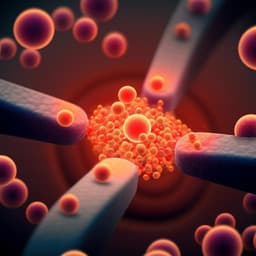
Engineering and Technology
A customizable, low-power, wireless, embedded sensing platform for resistive nanoscale sensors
S. Nedelcu, K. Thodkar, et al.
Discover a groundbreaking wireless platform that interfaces high-sensitivity nanoscale sensors, enabling precise detection of trace gases like NO₂. Developed by Stefan Nedelcu, Kishan Thodkar, and Christofer Hierold, this innovative technology boasts exceptional performance, with a limit of detection down to 1 ppb and the flexibility for various IoT applications.
Playback language: English
Related Publications
Explore these studies to deepen your understanding of the subject.







